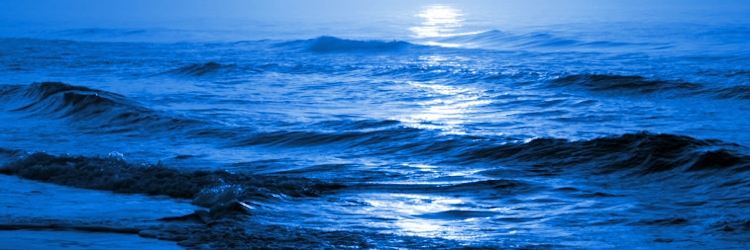Satellites and Storms Activity #5
The Gulf Stream: Storm-Maker

Author
Kevin Goff and Susan Haynes, Virginia Institute of Marine Science
Grade Level
8-12
Lesson Time
60 min
Objectives
- Describe atmospheric conditions from observing a basic weather map.
- Identify high and low pressure systems on a weather map based on respective indicators.
- Forecast conditions based on weather maps and satellite imagery of sea-surface temperature.
Hurricane, Northeaster, Noreaster, Low pressure, Wind barb, Coriolis, Fetch
Materials Required
Credits
edited and updated by Carol Hopper Brill and Chris Petrone, Virginia Sea Grant, Virginia Institute of Marine Science Summary
Investigate weather patterns, weather maps and the effects weather has on the ocean, all using real ocean observing system data. Introduction
Now, we come full circle to study sea surface temperatures again. This time, we'll concentrate our observations along the Atlantic coast, looking at the Gulf Stream. This famous current forms the western boundary of the North Atlantic Gyre's clockwise circulation. Flowing from south to north, the Gulf Stream moves warm water from subtropics to temperate latitudes and is the East Coast's powerful storm maker. It can carry hurricanes up the Eastern seaboard during summer and early fall, fueling the storms' strength with warm, wet air. And, since it carries some warm water year-round, the Gulf Stream also plays a role in promoting Nor'easters from fall through spring.
Moving currents of air and ocean interact to create these dangerous storms. Nor'easters usually develop off the coast of North Carolina or Virginia when the cold Labrador Current coming down from the North meets the warm Gulf Stream coming up from the South. The contrast in the air temperatures above these currents help form a low pressure system. At the same time over Canada, winds circulate in a clockwise motion around a high pressure system. These cold winds dip deeply into the United States, colliding with the warmer air mass sitting above the sea. Since warm air is lighter, it rapidly rises over the arctic air, drawing moisture with it. The pressure then plummets and a wet, violent tempest takes shape.
Data Activity
Look for the Gulf Stream at the Cool Room website.
- On the Satellite Images page, scroll down the page until you see on the left "Sea Surface Temperature Composite."
- Under that heading, select "Eastcoast."
- Scroll down to the "Most Recent Imagery" section in the center. You'll see thumbnail images for 10-days of data. The image at top left is an analysis of yesterday's satellite data.
- Click the most recent image to get a full screen. You'll see the longitude (X-axis) and latitude (Y-axis). The temperature color legend is on the far right; you may have to use the cursor arrow to scroll over to it.
Look again at the water temperatures off the Atlantic Coast.
- Can you discern the Gulf Stream as it travels up the southeast coast of the U.S.?
- How warm was the water in the Gulf Stream off Cape Hatteras, 35°N latitude, 75°W longitude, last summer? Look at August 15, 2006.
- What about in mid-winter? Can the Gulf Stream carry any warmth up the coast in January?
- Look at January 15, 2007.